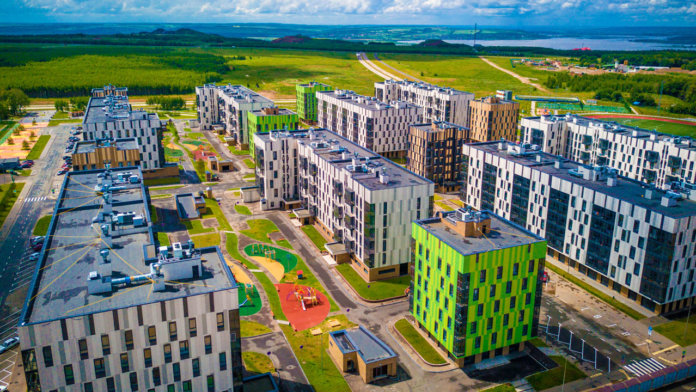Cities are almost like people: they are born, live, grow old and even die. But, unlike the status of "Homo sapiens", the status of a city is not assigned to a settlement forever. So former cities disappear from the map of Russia, merge with each other, turn into villages or cease to exist altogether. Does this fate threaten the smallest cities in Russia?
10. Gorbatov - population 1982
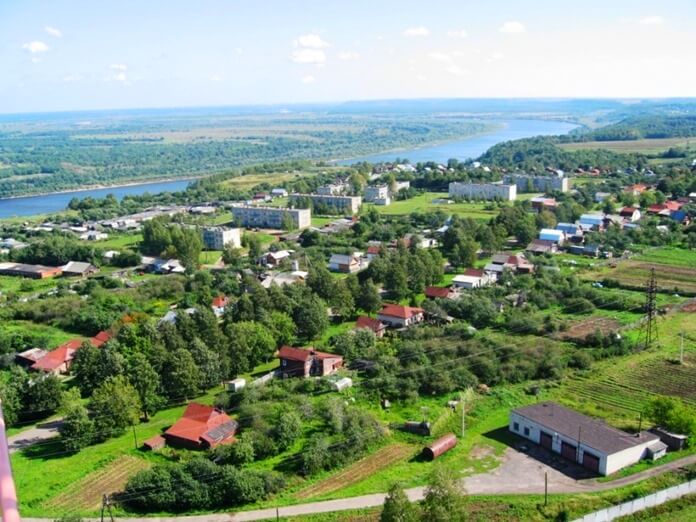 Our "mini-list" opens with an ancient city, the first mention of which dates back to the 16th century. Gorbatov is located in the Nizhny Novgorod region. From the moment of its existence, it was not large, and its number did not exceed four thousand people.
Our "mini-list" opens with an ancient city, the first mention of which dates back to the 16th century. Gorbatov is located in the Nizhny Novgorod region. From the moment of its existence, it was not large, and its number did not exceed four thousand people.
In recent years, there has been an active outflow of population from Gorbatov, and 2017 became a record year for the city - the population became the lowest in its entire history.
However, despite the size of the population, Gorbatov is a kind of celebrity in the world of cinema. After all, it was there that Nikita Mikhalkov filmed episodes of "The Barber of Siberia" and "Burnt by the Sun 2". Indeed, what kind of terrain is best suited to display on the screen of a sleepy county town?
9. Primorsk - 1960 inhabitants
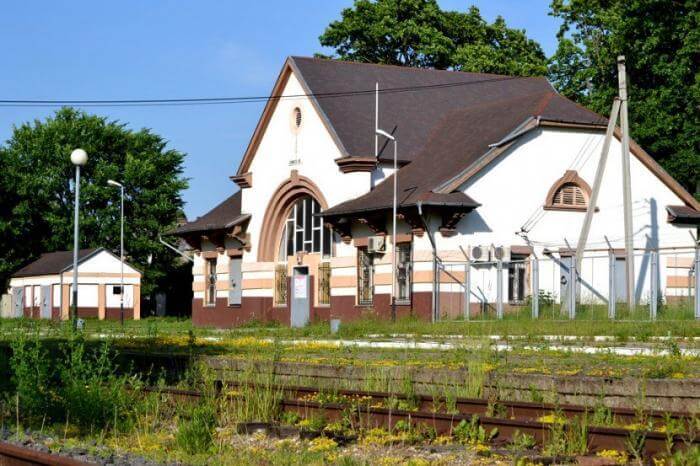 Primorsk is located in the Kaliningrad region, on the shores of the Baltic Sea. People have settled there for a long time, so Primorsk is an ancient city. The first mention of it (under the German name) dates back to 1288.
Primorsk is located in the Kaliningrad region, on the shores of the Baltic Sea. People have settled there for a long time, so Primorsk is an ancient city. The first mention of it (under the German name) dates back to 1288.
Then the future Primorsk was of great importance, served as a district center and even received its own coat of arms, which has survived to this day.
Over the centuries, the city diminished in size and, starting in the 18th century, its inhabitants rarely exceeded the modest two thousand. Several times they tried to take away the status of the city from Primorsk, but they invariably returned it back. Residents do not care about all these perturbations; as they lived in a quiet city with old houses left over from German times, they still live. And the places there are beautiful - the sea alone is worth it!
8. Island - 1847 people
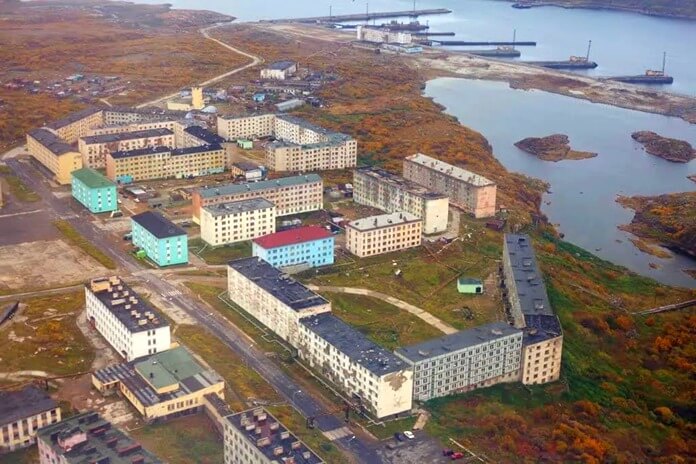 Before the Soviet regime, the city had a difficult to pronounce name Yokanga, then it was renamed Gremikha. But in fact, under these nondescript names there was a naval base, from where Russia threatened not only the Swedes, but the entire capitalist Western world.
Before the Soviet regime, the city had a difficult to pronounce name Yokanga, then it was renamed Gremikha. But in fact, under these nondescript names there was a naval base, from where Russia threatened not only the Swedes, but the entire capitalist Western world.
The latest achievements of military science, such as strategic military missile carriers, were based there. And then, after the collapse of the USSR, they began to store spent nuclear fuel at the base.
Now Ostrovnoy is going through a period of decline, but there are rumors that the military base is going to be revived. This means that Ostrovnoy will also come to life.
7. Plyos - 1796 inhabitants
 Let Plyos be a small town, but very important. It is the only one of the ten smallest cities in Russia included in the list of historical settlements of federal significance. And it is famous not even for its antiquity (the first mention of the settlement of people in this place dates back to the 12th century), but because in the 19th century famous Russian people of art worked, rested and entertained themselves there.
Let Plyos be a small town, but very important. It is the only one of the ten smallest cities in Russia included in the list of historical settlements of federal significance. And it is famous not even for its antiquity (the first mention of the settlement of people in this place dates back to the 12th century), but because in the 19th century famous Russian people of art worked, rested and entertained themselves there.
One of the most fabulous cities in the world saw many celebrities - from Savrasov to Chaliapin, but Levitan glorified him most of all. It was there that he wrote most of his works. Since then, Plyos has been strongly associated with the art world. There are cinematographic, music and even sports festivals every year.
And even if the town's own population is getting smaller every year (from 4000 inhabitants in the early 90s of the last century it decreased to 1796 people), it looks like Plyos is not threatened with extinction. They will live in him, they will go to him, they will love him.
6. Artyomovsk - 1688 people
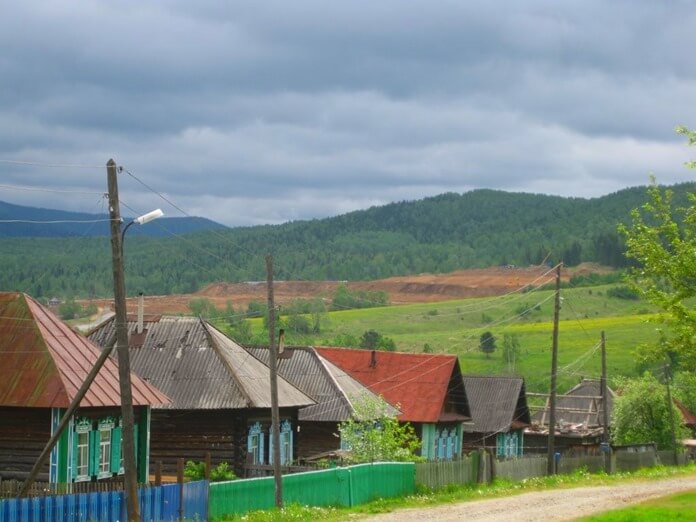 This is one of the many mining settlements founded in Siberia, when deposits of valuable metals were found there. Artyomovsk was given life by gold mining at a nearby mine.
This is one of the many mining settlements founded in Siberia, when deposits of valuable metals were found there. Artyomovsk was given life by gold mining at a nearby mine.
It is hard to believe that this small town was once considered a quite decent-sized city. In the 60s and 70s, its population exceeded 10 thousand people. However, something went wrong, and the restructuring finally knocked him down. Since then, Artemovsk has been slowly dying.
5. Kurilsk - 1591 inhabitants
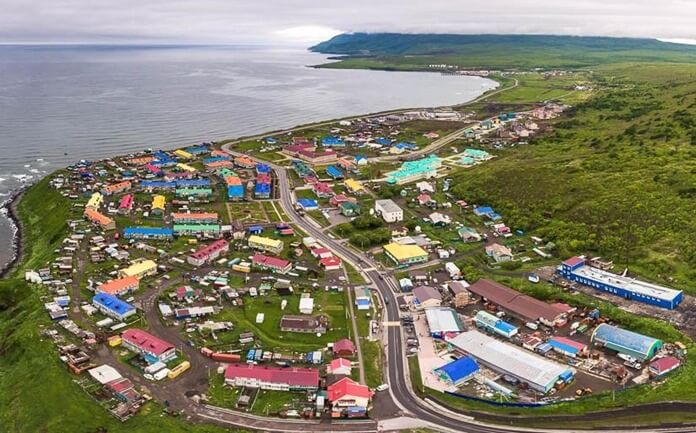 The city is located on an island in the Pacific Ocean, which changed owners about once a century, passing from the hands of Russia to the hands of Japan and back. So is Xiang, which became Japanese in the middle of the 19th century, after the end of World War II became part of the USSR.
The city is located on an island in the Pacific Ocean, which changed owners about once a century, passing from the hands of Russia to the hands of Japan and back. So is Xiang, which became Japanese in the middle of the 19th century, after the end of World War II became part of the USSR.
So that nothing would remind of the former owners, the country's government hastened to get rid of the Japanese names, turning Xianu into Kurilsk. Of course, no one asked the opinion of the indigenous population, the Ainu; however, by that time they had almost completely disappeared from the face of the Earth. All that remains of them is the occupation that the current population of the city is engaged in - fishing.
4. Verkhoyansk - 1122 people
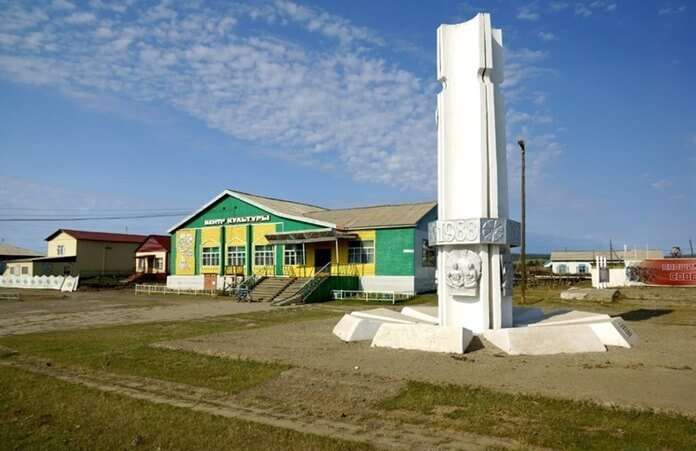 This is the northernmost city of the Republic of Yakutia. Historically, unwanted people - revolutionaries, political opponents and other troublemakers - were exiled to this tiny settlement in white silence.
This is the northernmost city of the Republic of Yakutia. Historically, unwanted people - revolutionaries, political opponents and other troublemakers - were exiled to this tiny settlement in white silence.
In addition to the exiled past, Verkhoyansk is also famous for the fact that it is coldest city in the world... In winter, the temperature in it can reach a terrifying value for any warm-blooded creature of -67.7 °. Unsurprisingly, the city's population never exceeded 2000 souls.
3. Vysotsk - 1094 inhabitants
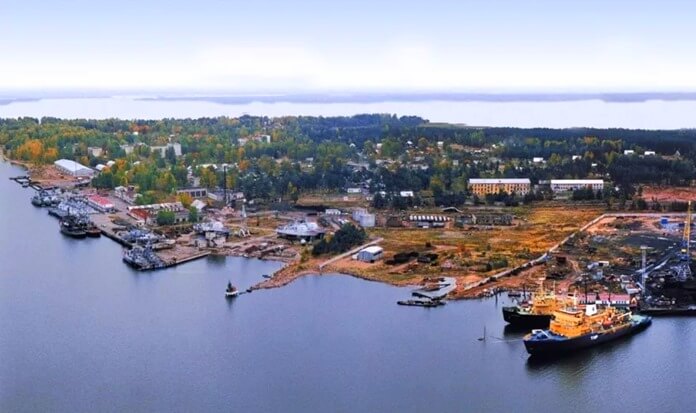 From the eastern borders of our Motherland we are transferred to the north-west, to the Leningrad region. It is there, on the island of the same name in the Gulf of Finland, that the city of Vysotsk is located.
From the eastern borders of our Motherland we are transferred to the north-west, to the Leningrad region. It is there, on the island of the same name in the Gulf of Finland, that the city of Vysotsk is located.
There used to be a modest Karelian-Finnish settlement of Uuras, whose inhabitants were fishing. But after part of the northern territories following the results of World War II fell into the hands of the USSR, as in the case of Kurilsk, the settlement was renamed Vysotsk.
Now it is a small port town where some of the Russian border ships are based. After an oil terminal was built near Vysotsk, the city's population grew by almost a third (from 1200 to 1750 people). But it was not possible to exceed the mark of 2000 inhabitants, especially since people began to leave Vysotsk in 2010. True, the city services are not discouraged, they even plan to build a sports center based on the latest science and technology.
2. Chekalin - 914 people
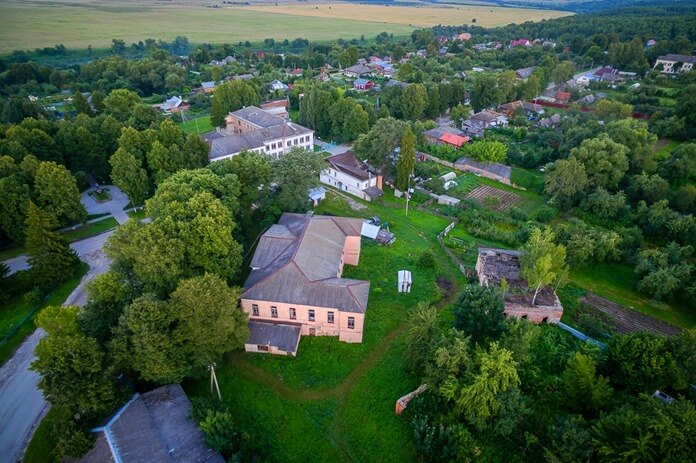 This Russian city, which for a long time held the palm in diminutiveness, has a long and glorious history. Once he served on the front line, entered the defensive line against the Kazan Khanate. Then it was a thriving trade center, living off the rafting of goods along the Oka River. Then the river became shallow, and the railroad tracks - a new trade artery - bypassed the city. So Chekalin (then still Likhvin) began to lose people until he reached the current sad state.
This Russian city, which for a long time held the palm in diminutiveness, has a long and glorious history. Once he served on the front line, entered the defensive line against the Kazan Khanate. Then it was a thriving trade center, living off the rafting of goods along the Oka River. Then the river became shallow, and the railroad tracks - a new trade artery - bypassed the city. So Chekalin (then still Likhvin) began to lose people until he reached the current sad state.
The Chekala residents themselves categorically do not want to lose their status as city residents. They were not even tempted by the generous promises of the district administration, which offered the townspeople a reduction in utility rates, as well as various bonus payments.
No, residents of Chekalin are even ready to suffer material damage, but to defend their city.Well, such love for your place of residence can only be envied. Perhaps tourism will breathe new life into the city. After all, the places there are beautiful, and Chekalin is located just 250 km from Moscow.
1. Innopolis - 407 residents
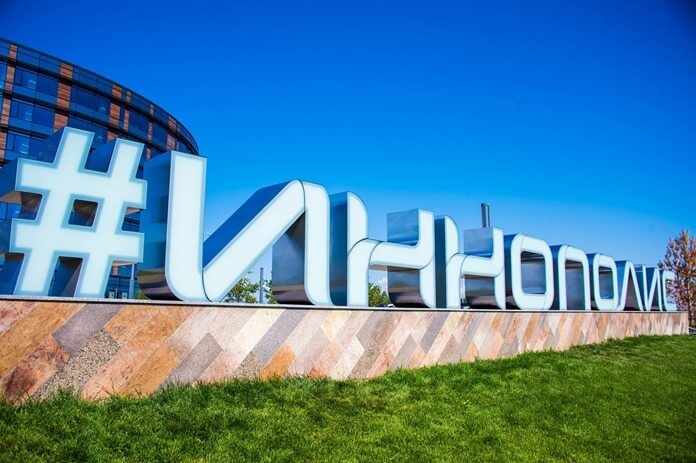 The smallest city in Russia in terms of population in 2019 is considered to be a science city located in the Republic of Tatarstan. It differs not only in its small size, but also in that it is one of the rare cities that appeared on the map of the Russian Federation after perestroika.
The smallest city in Russia in terms of population in 2019 is considered to be a science city located in the Republic of Tatarstan. It differs not only in its small size, but also in that it is one of the rare cities that appeared on the map of the Russian Federation after perestroika.
The first to speak about the creation of an advanced science city was the President of the Republic of Tatarstan. It was assumed that it would be a modern city, with all the necessary infrastructure, where high minds would calmly engage in science and earn fame and money for the republic. And the service staff will take care to make it comfortable and convenient for them. The layout of the city was created by a venerable Singaporean architect, and the name was personally chosen by the ruling elite of the republic.
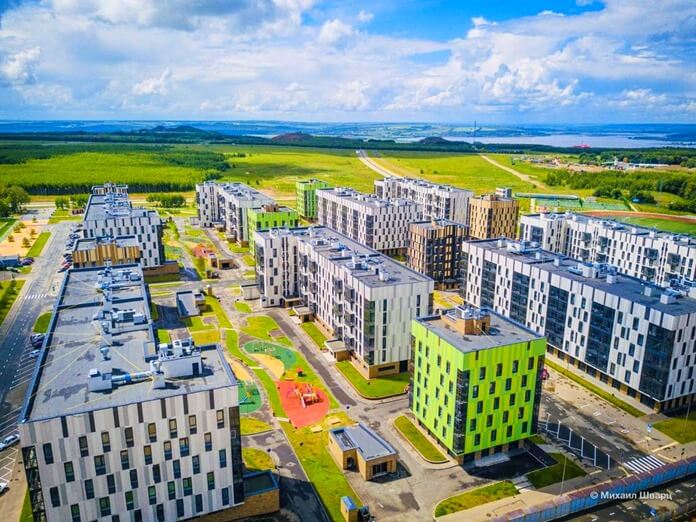 The city officially opened in 2015, and at that time its population was only 10 people. Over the past 4 years, it has increased 40 times and now it is home to as many as 407 residents.
The city officially opened in 2015, and at that time its population was only 10 people. Over the past 4 years, it has increased 40 times and now it is home to as many as 407 residents.
At this rate, up to the declared figure of 155 thousand citizens, Innopolis has only 388 years to wait. In the meantime, these 407 people are living in luxury in an area designed for a much larger number of people.
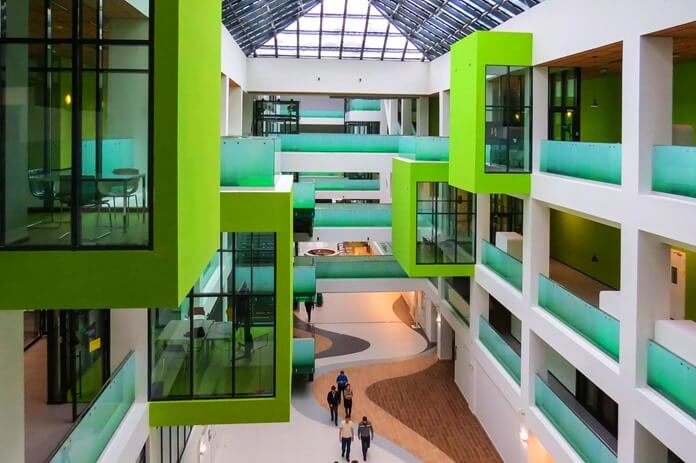 The city has its own university, an international school, a medical center designed to receive 500 patients per day, as well as a city stadium and a sports center. It's even a pity that this splendor is rarely animated by human figures. True, the residents themselves are satisfied, because their city is quiet, calm, the air is fresh, and everyone knows each other. And if you want civilization, then Kazan is very close, and you can get there by taxi.
The city has its own university, an international school, a medical center designed to receive 500 patients per day, as well as a city stadium and a sports center. It's even a pity that this splendor is rarely animated by human figures. True, the residents themselves are satisfied, because their city is quiet, calm, the air is fresh, and everyone knows each other. And if you want civilization, then Kazan is very close, and you can get there by taxi.

